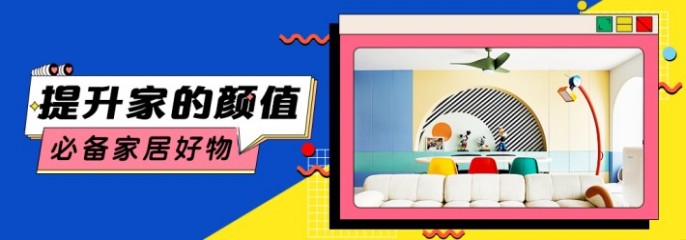【太平洋家居网 香港设计营商周】由香港设计中心举办的香港设计营商周将于11月30日-12月5日在湾仔的会展中心举办,来自全球的殿堂级设计大师,以及业界最具影响力的风云人物,都会在活动期间亲临香港,分享他们的创意思维与设计管理技巧。还记得那个被山寨成爆款的鸵鸟枕头吗,它就是由英国设计师Ali Ganjavian设计的Ostrich枕头,只露出口鼻的奇葩创意,这个有趣的想法是设计师在饱受上班疲惫之苦的时候萌发的,跟我们一起听听他的采访,看看他是如何让设计变得更加好玩的。(采访/整理:米、吴嘉鸣)
关于采访对象
Ali Ganjavian,鸵鸟枕头发明者。自2006年来,Ali Ganjavian和他的合作伙伴Key Portilla Kawamura在创意产业领域发起了很多创业项目。这些项目涵盖了很多领域,根植于不同的国家和区域。
PChouse:您的设计哲学非常有趣,尤其是为乐趣而设计。请问在您的设计中,趣味占据了多大比重?
当你认为所做的事情很有趣的时候,往往能容忍犯错误。就像幼儿园给儿童提供玩乐的平台,在这个轻松的环境下他们往往在不断学习。而且当你玩得开心的时候,你会发现新事物。玩是很重要的,跟对的人一起玩同样重要,就比如有时候你跟某些人会比跟另一些人玩得更开心,道理就是这样。
但是同样重要的,是跟你一起玩的人要跟你“温度相同”,就是玩得来。例如,你喜欢身处22度的环境,我喜欢30度,她喜欢13度,这样大家就很难融合。所以“温度相同”也很重要。
PChouse:面前有很多解决办法的情况,您是如何应对的?
这种情况要科学应对。在众多解决办法面前,选取你喜欢的方法,再深入研究。当你发现另一个办法也可以,你也会拿出来深入研究。所以我们很多的解决办法其实是两个方式的融合,产生新的方法。
PChouse:您曾提到,当今的语言是数字化。所以将科技融入产品中是非常重要的。你怎么看待这方面的潜力和可持续性?
你们在座的每一位,昨晚的晚餐是什么?可能是寿司,面条……但其实一颗药丸已经可以提供所有你需要的蛋白质维他命等等的营养。可是你不会用药丸代替晚餐。因为寿司或者其他晚餐为你提供了独特的经历。我手中有很多工具,当我想将想法写下来,我会用速写本;想创造一些新的想法时,我会用海报。每个媒介本身都有不同的功能。没错,数字化是非常重要的,但它是一种语言。何时用何种语言是根据需求而定的。数字化会不断发展,可是传统的事物也会一直流传下来。
PChouse:您有关失败的哲学非常有趣。但是在我们的教育体系,尤其是设计教学上,失败并非好事。如果您创立一所设计学院,您会采取什么样的教学方式?
我认为一个非常好的办法就是将一小时的课程压缩为3分钟。因为当时间非常有限时,你就不会产生失败感。例如,如果你要在3分钟内做出一道菜给宾客吃,例如是炸薯条,你会妥善用好这珍贵的三分钟。然而如果你有一小时,可能你会花更多时间思考到底做什么,怎么做,味道怎样,等等。因为只有三分钟,你会允许自己犯错,但如果给你一个小时,情况就不一样了。所以我会压缩课程时间,所以学生要在极短时间内产生新想法,他们自然会犯错,自然会失败,也会自然接收失败。在亚洲还有我生长的地方,失败是糟糕的事情。但在美国,情况恰好相反。最近我结识了一个人,他说在面试求职者时,他往往会选择过往在工作遭受失败的人,因为他们往往更富经验,能为公司带来更多价值。
我的失败哲学是犯错,再次犯错,再次更好地犯错。很多公司,例如苹果,他们会希望得到快速的发展,但这样的结果往往是快速上升,然后缓慢甚至停止增长。但是如果是犯错,再次犯错,再次更好地犯错这种模式,你会螺旋式上升,不会停止,因为每一次的失败你都会学到新的经验,帮助你走得更远。
PChouse:感谢您为我们带来很多出色的创意,例如鸵鸟枕头等。您的创意来自哪里?另外,如何让创意源源不断涌现?
我们会认真听和认真观察。例如当我回家时,在旅途上我会发现很多有趣的现象,而这些现象往往会激发创意。我觉得创意来自于对生活保持敏感,和不断观察。例如在中国,地铁上很少有人带耳机,而欧洲却可以看到满大街的人带着大耳机。这是为什么呢?这种问题会引向另外一个问题,然后你就发现自己时常在提出各种各样的问题。而我们身处的时代,让我们可以随便问问题,从他人或者是互联网中得到答案。
第二个原因是团队。你知道吗,爱斯基摩人的语言中有82种白色,因为白色是他们每天看得最多的颜色。设想一下让他们来香港旺角,看到那么多颜色,他们肯定会获得非常不一样的体验,但是我们身处其中,则不会有太多感觉。所以我想说的是,当你将看事物不一样的人放到一起的时候,你就会发现很多不一样的事物,不一样的解决方式。
PChouse:您是一个英国的设计师,您认为英国的设计有什么独特之处吗?
我们通常不会考虑一个国家的风格。其实在我们的工作室,有来自日本、西班牙、阿根廷、葡萄牙、法国、巴西等等的设计师。大家都来自不同的国家,还有人来自不同的领域,例如有设计师本来是做财政方面的工作的。其实这与风格无关,与每个人的思维有关。
PChouse:您怎么看待设计作品商业化?
对这方面我不太熟悉。我希望一个创意工作室可以接触到一些有趣的分销商,这样我们只需关注于设计本身,会轻松多了。可是我不确定是否有这样的模式存在。
PChouse:您怎么定义图示思维?
很多人认为图示设计是一个视觉过程,可是对于我们来说,是个思维过程。例如,如何联系复杂的信息并将它们简化,就是图示思维。又如,你身处一个漂亮的建筑,寻找卫生间的过程就是图示思维联系。当你进入卫生间关上门,这个封闭的空间让你思考。图示思维又再次让你思考,提出问题。所以,图示思维不止是提供信息,同时也促使想法的诞生。图示思维可以产生很多线索,这些线索会构成新设计,同时也会与我们所做的其他设计产生联系。
PChouse:正如您说的,您与很多背景不同的人一起工作,你也拥有几个工作室。您是如何招募新人的?
Key Portilla Kawamura 是我最好的朋友,也是我的工作伙伴。我们是很久之前在伦敦读大学的时候认识的。之后我们认识了Alex Barona,现在我们三个是工作伙伴关系。所以KG工作室是我们开始合作的地方,可是现在我们不会将它视为交流想法的地方了。因为KG工作室不再是关于我们三个人,是关于更多的人和他们的想法。所以我们设立了香蕉工作室,现在我们主要的活动都在那里。
吸引新的设计师,我们靠的是磁力。会有些人来到我们工作室,提出他们的设计理念跟我们相同,我们就会让他们进来。工作一段时间后,他们会思考这个地方是否适合,再决定是否留下来。同时,我们还有很多合作的工作人员和专家,在进行一些项目时,我们会邀请他们过来,项目完结后,他们就会离开。
PChouse:您未来有何计划?
我们没有什么计划,我们只有方向。方向比计划更妙的地方是,朝同一个方向有很多不一样的道路。所以当别人问我们日后想成就什么的时候,我们会说,我们希望有一个创意工作室,才华横溢的团队,不断产生让人意外的,从来没有人想过的想法,对当地对世界产生影响。创意是我们的热情所在。对于我们来说,产品不仅仅是产品本身,还是与产品相关的一切。经历比产品本身重要,这也是我们努力想做到的一点。
PChouse:您的团队有什么共同点吗?
大家都有同样的理念,渴求,和发现新事物的热情。工作室是所有人的,很多时候大家想做点什么,我们的工作室就会着手去做。我们彼此“温度相同”,相处融洽,充满好奇心,而且都富有同情心。同情心对于增进理解很重要。例如我们曾有来自美国和印度的客户彼此相处不融洽,我们的解决办法是将他们凑到一起,花整整一天时间烹饪,然后一起吃。在烹饪的过程中,他们增进了对彼此的理解,这段关系得到极大的改善。另外,我们的团队都能自如应用左右脑,例如我们都很爱玩,但同时又很会整理想法。
PChouse:I am very interested in your design philosophy, say, for fun. How important is the fun element in your design?
When you have fun, you do things which you are ok with making mistakes. It’s like with a child. You go to kindergarten which is all soft, and where they are taught to play, so they are constantly learning. So when you have fun, you discover new things. It’s super important to have fun, and it’s important to have fun with the right people. You might have more fun with some friends than with others. You might have fun with some professionals more than others. The key is to have fun with the right people.
But it’s just as important to have the same temperature with people. For example, if you like to be in a room of 22 degrees, and I like to be in a room of 30 degrees, and she likes to be in a room of 13 degrees, it’s very hard to collaborate. So we all have to have the same temperature.
PChouse:How was it happened when there were so many solutions?
Basically what do is a bit scientific. You create multiple solutions, and then based on those multiple solutions, you select the one you like and work on that. And then you discover that there’s something here you also like, so lots of our solutions are two things coming together. So it’s not about one thing and another thing, but about two things blending together to create something new.
PChouse: As you have said, language of today is digital. More important is integrating the technology into products. How do you see the possibility and sustainability?
All of you, what did you have dinner last night? Sushi, noodles…But you could have a tablet, which gives you vitamins, proteins that can substitute your dinner. But would you do that? No. Because that sushi gives you an unique experience. I have different tools, like if I’m writing something, I use my sketchbook, if I want to create some quick ideas, I go to posters. Different functions for different mediums. So digital is very useful, but it’s a language. Different languages you use depend on different needs. So answer your question, digital will grow, but traditional things we use will also prevail.
PChouse: I love your philosophy about failure. But in our education, especially design education do not like failure. So if you were the one to create a design school, what you would do?
So I think what I would do and it’s worked really well is compacting one-hour class into three minutes. Because when you have very little time, you lose the sense of failure. For example, you have to cook something in three minutes, and you would have guests too. If you are to cook potato chips, you would say, look I only have three minutes to make it. If you have one hour, you would be like, what should I make, how should I make it, does it taste nice… You are allowed to make mistakes in three minutes, but an hour, you are not. So I will try to compact classes in five minutes, so students can have constant new ideas in a very short period of time, which naturally you will make mistakes, naturally you will fail, and naturally you will be ok with it. I think in Asia and also where I come from, failing is terrible. But in America it’s the opposite. I recently met some one who said, when I interviewed some one, I look for people who have failures in companies, because he will have experience to basically bring values in our organization.
Most companies want to grow quickly. But when they grow quickly they become flat, for example Apple. So if you fail, fail again and fail again better, you are constantly evolving because you learn something at each failures which take you up further.
PChouse:Thank you for your brilliant ideas, like ostrich pillow and kangaroo light. How does your inspiration come from, and how do you manage to make ideas keep flooding in?
We listen very well, we observe very well. When I would go back home, having seen things in this journey which help me to discover many beautiful things, and they stimulate other things. So I think it’s about being aware, and observing. Like in China, not like in Europe, fewer people are using headphones. Why? So this question leads to a second question, and you are constantly asking questions. And the beautiful things about the nature we are living in is that you can ask all the questions you want to anyone, and you can get answers from them or the internet. The other thing is team. You know Eskimos have 82 different names for white because they are surrounded by it. So if Eskimos come to Hong Kong, they would feel really different because there are too many colors. If you put people that see things differently, you will create unexpected solutions.
PChouse:As you are a designer from UK, could you please share with us some of the uniqueness of British designs?
We normally don’t think of styles. In fact in our studio, people are from different places, like Japan, Spain, Argentina, Portugal, France, Brazil… Everyone comes from different backgrounds, maybe they come from finance, etc. It’s actually not about style, but what’s in our brains.
PChouse:How do you think of the commercialization of design works?
I don’t know much about that part of the work. I wish there were places where one creative studio could go and access to many interesting distributors, because then it can make our life easier. We can spend more time creating. But as we don’t come from that part we don’t know if this model exists.
PChouse:How do you define your graphic thinking?
In terms of graphic thinking, most people think of graphic design as a visual process, but we define it as a thinking process. For example, how do you relate complicated information and simplify it. Like in you are in a beautiful building, how do you find the toilet? It’s a graphic exercise. Then you are in a toilet you close the door, that space can make you think. And again, graphic thinking may ask you questions. So it’s about informing and provoking rather than just informing. That’s why we call it graphic thinking because it has many lengths that can create a journey. It works really well in conjunction to other things we do.
PChouse:You work with many people from different backgrounds, and you own different studios. How do you collect people?
Key, my best friend and business partner, he and I met many years ago in London in university. And then we met somebody else named Alex, so we’re three partners. So studio KG is where we began, but not where we are right now. So we don’t use studio KG as a place to communicate. Because it’s very much about us, but the studio is not about us, but about people and ideas. So we changed to studio banana. So now all our activities are in studio banana.
It’s like magnet. We will have people knocking our doors and say we have the same philosophy, let’s see if it works. If they love, they stay, if not, they leave. And we have collaborators and experts coming in our projects.
PChouse:What’s your plan?
We don’t have plan, we have direction. So you can be anywhere. So when people ask where we want to be when we get older, we would say that we want to have a creative studio that does unexpected, unimaginable things, together with really talented people and make impact in society, locally and globally. Creativity is our passion. For us product is not just product, but everything that connects to it. It’s the whole experience that matter, that’s what we strive to do.
PChouse:Could you please describe the common points of your team?
Everyone share a common philosophy, eager, hunger to discover new things. We do many things today because the team wants to do them. The studio is everyone’s project. We all share temperatures, tensions, curiosity, and we are all very empathetic. When we meet someone, we are eager to ask questions about him/her, so we learn things. And people in our team enjoy both sides of their heads, like to play and like to structure their ideas.
We occasionally connect clients from USA and India who have lots of problems, making them to cook and eat together. The effect was amazing, they understood each other better. The relationship changed dramatically.




 佚名
2015-12-04 14:50:04
佚名
2015-12-04 14:50:04




